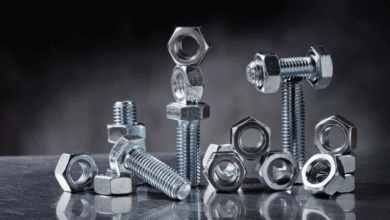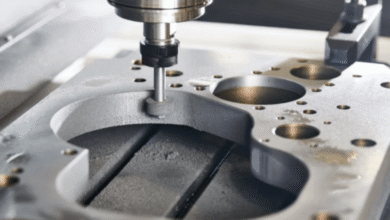Alvázvédelem: Everything You Need to Know About Vehicle Underbody Protection

In the world of automobile care and maintenance, many vehicle owners focus on engine performance, paint protection, tire rotation, and oil changes. However, there is one critical area that often goes unnoticed — the underside of the vehicle. This is where alvázvédelem, the Hungarian term for underbody protection, becomes an essential concept. It refers to the preventive and protective measures taken to shield the vehicle’s chassis and other lower components from corrosion, rust, and mechanical damage.
This article explores everything you need to know about alvázvédelem: its importance, methods, materials used, professional vs. DIY options, and why it’s especially relevant for drivers in areas with harsh environmental conditions.
What Is Alvázvédelem?
Alvázvédelem refers to the application of protective coatings to a vehicle’s undercarriage, with the goal of preventing rust, corrosion, and damage from water, road salts, gravel, and other elements. The underbody is home to vital components including the frame, fuel lines, brake lines, suspension parts, and exhaust system — all of which are vulnerable to deterioration over time.
Neglecting the underbody may not show immediate problems, but the long-term effects can be catastrophic, leading to compromised safety, expensive repairs, and even reduced vehicle lifespan. Therefore, alvázvédelem plays a critical role in overall vehicle maintenance.
See also: Bending in Sheet Metal: Techniques, Applications, and Challenges
Why Is Alvázvédelem Important?
1. Prevents Corrosion and Rust
One of the primary goals of alvázvédelem is to prevent the formation of rust. When metal is exposed to water, oxygen, and salt — especially during winter months — it undergoes oxidation.
2. Extends Vehicle Lifespan
By applying proper underbody protection, you’re effectively adding years to your vehicle’s life. Treated underbodies resist deterioration longer than untreated ones, especially in challenging environments like snow-covered or coastal areas.
3. Improves Safety
A corroded undercarriage can affect your vehicle’s brake lines, fuel system, and frame. Keeping these areas rust-free helps maintain the car’s mechanical performance and ensures safety on the road.
4. Protects Investment Value
Buyers are more willing to invest in a vehicle that’s been protected with alvázvédelem, seeing it as a sign of responsible ownership.
When Should Alvázvédelem Be Done?
The ideal time for underbody protection is before the start of winter, when roads are commonly salted and wet. However, alvázvédelem can be applied any time of the year as long as the underbody is clean and dry. Spring is also a great season for applying or reapplying coatings to repair any winter-related damage.
Different Types of Alvázvédelem Methods
1. Rubberized Undercoating
This is the most commonly used type of underbody protection. Rubberized sprays form a durable and flexible coating that resists moisture and stones, while also dampening road noise.
2. Wax or Paraffin-Based Coatings
These treatments are thinner and work by creeping into seams and cavities to provide corrosion protection. They’re ideal for newer vehicles or as part of annual maintenance.
3. Bitumen-Based Coatings
Bitumen is more industrial-grade and is used for heavy-duty protection. This type of alvázvédelem is thicker and longer-lasting but may require professional application.
4. Oil-Based Treatments
These are used in regions with harsh winters. Oil sprays penetrate even the tiniest crevices and provide effective rust prevention, though they may attract dust and require annual reapplication.
Alvázvédelem: Professional vs. DIY
Professional Underbody Protection
Professional services often begin with a full undercarriage cleaning using pressure washers, followed by inspection, rust removal, and coating application. Many auto garages offer a multi-layered treatment with warranties lasting several years. The results are typically more durable and thorough compared to DIY methods.
DIY Alvázvédelem
Do-it-yourself kits are widely available and often include spray cans or brush-on products. While these are cost-effective and suitable for maintenance between professional treatments, they require adequate preparation. The undercarriage must be completely dry, clean, and rust-free for the coating to adhere properly.
How Alvázvédelem Is Applied (Step-by-Step)
- Inspection and Assessment
The vehicle’s underside is inspected to identify rust, cracks, or weak points. - Cleaning and Degreasing
High-pressure water jets and degreasers are used to remove dirt, oil, and grime. - Rust Removal or Treatment
Rust spots are sanded, ground off, or chemically neutralized using rust converters. - Masking Sensitive Areas
Components such as the exhaust pipe, sensors, and brakes are masked off to avoid accidental coating. - Application of Protective Coating
Using sprays or brushes, the protective compound is evenly applied in one or more layers. - Drying and Curing
The vehicle is left to dry in a warm, dust-free environment for several hours.
Factors That Affect Alvázvédelem Effectiveness
- Climate: Vehicles in snowy or coastal regions need more frequent treatment.
- Driving Conditions: Off-road or gravel road drivers are more prone to underbody damage.
- Coating Material: High-quality products offer longer-lasting protection.
- Maintenance: Regular inspections and touch-ups ensure continuous effectiveness.
Alvázvédelem for New vs. Used Cars
Many believe that only old or used cars need underbody protection, but this is a misconception. New cars benefit greatly from early alvázvédelem as it ensures the underbody stays rust-free from the start. On the other hand, used cars often need more attention, especially if signs of corrosion have already begun. Applying a protective layer after rust removal can halt further deterioration.
Conclusion
Alvázvédelem is an essential but often overlooked aspect of car maintenance that can significantly enhance the durability, safety, and value of your vehicle. Whether you choose to do it yourself or seek professional services, protecting the undercarriage should be a top priority — especially for those living in regions with snow, rain, or challenging road conditions.
By investing in alvázvédelem you’re not just protecting a part of your vehicle — you’re safeguarding the entire driving experience.





